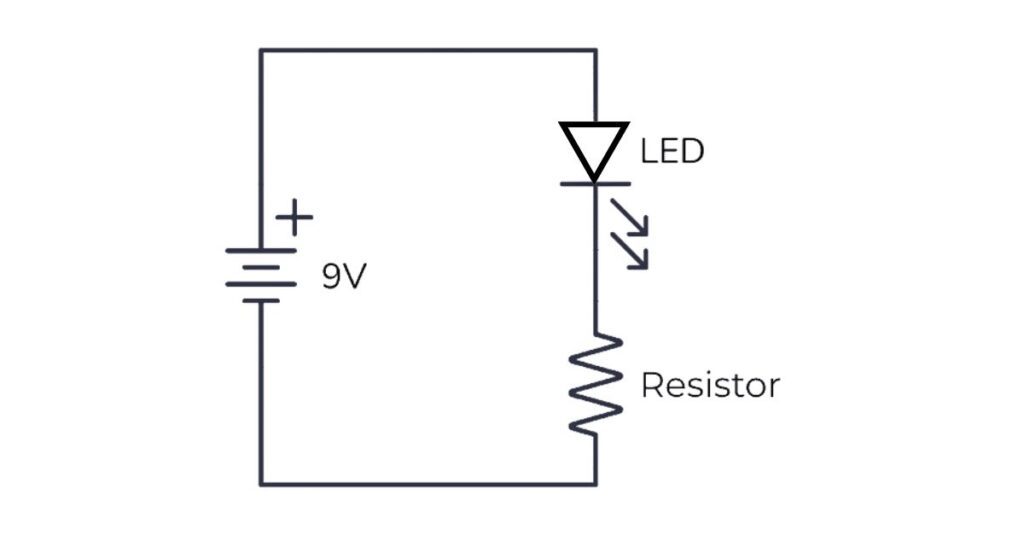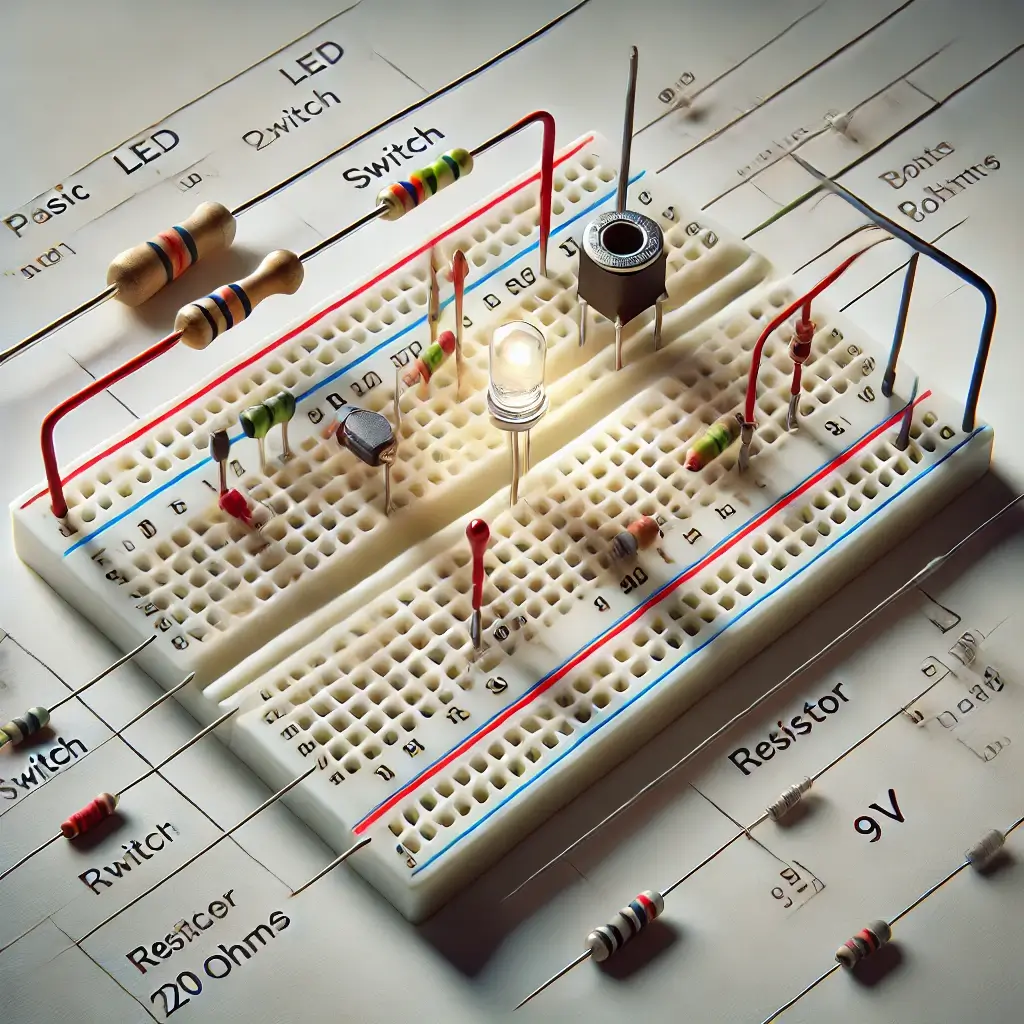Introduction
Building simple electronic circuits is an essential skill for beginners in electronics. It offers a hands-on approach to learning that strengthens understanding of fundamental concepts.
Beginners can benefit from practical learning, which encourages creativity and problem-solving. In this guide, we’ll take you through the process of building simple circuits, step by step.
What is an Electronic Circuit?
An electronic circuit is a path through which electrical current flows. It consists of components that work together to perform specific functions. The basic components of a circuit include:
- Power Source: Provides the energy (e.g., batteries).
- Conductors: Wires that carry the current.
- Load: Devices like LEDs or motors that use the current.
- Switch: Controls the flow of electricity.
Understanding these basic electronic circuit components is crucial for building functional circuits.

Now, we are going to understand some important electronic components.
💡 Learn More: Check out our Basic Electronic Components Guide.
Tools and Materials Required
To get started, you’ll need some essential tools and materials:
Tools:
- Multimeter (for measuring voltage, current, and resistance).
- Breadboard (for prototyping circuits without soldering).
- Soldering iron (for permanent connections).
- Wire cutter and stripper.
Components:
- Resistors
- Capacitors
- LEDs
- Wires
- Batteries
These tools and materials form the foundation for tools for building electronic circuits and are part of every beginner’s guide to circuit components.
Understanding Circuit Diagrams
Circuit diagrams are like blueprints for building circuits. They use standardized symbols to represent components and connections.
Common Symbols:
- Resistor: Zigzag line.
- LED: Triangle with an arrow and two lines.
- Battery: Two parallel lines (one longer than the other).
Here’s an example of a basic circuit diagram for an LED:

Step-by-Step Guide to Building a Simple Circuit
a) Planning Your Circuit
Start with a simple project. For example, build an LED circuit with a switch.
b) Assembling Components on a Breadboard
- Understand the breadboard layout: Rows and columns are interconnected.
- Insert the battery leads into the power rails.
- Connect the resistor to limit current and prevent LED damage.
- Place the LED and connect it to the switch.
c) Testing the Circuit
- Use a multimeter to check voltage across components.
- If the circuit doesn’t work, recheck connections.
d) Optional: Soldering for Permanent Circuits
If you want a durable circuit:
- Solder components onto a printed circuit board (PCB).
- Ensure solder joints are clean and secure.
By following these steps, you’ll understand how to build an LED circuit and troubleshoot testing electronic circuits for beginners.

Want to dive deeper into this? Check out our Beginner’s guide: Introduction to Breadboard.
Example Projects for Beginners
Here are some easy beginner electronics projects to try:
- Blinking LED Circuit: Use a 555 timer IC to make an LED blink.
- Buzzer Circuit: Build a simple buzzer using a piezo element.
- Fan Control Circuit: Use a potentiometer to adjust the speed of a small fan.
These easy DIY circuits will help you gain confidence and practice.
Common Mistakes to Avoid
Beginners often make errors such as:
- Incorrect connections.
- Using wrong component values.
- Forgetting to test connections.
Tips to Troubleshoot:
- Double-check circuit diagrams before assembling.
- Test individual components with a multimeter.
- Avoid overheating components during soldering.
Knowing troubleshooting simple circuits and following tips for beginner circuit builders will save time and effort.
Conclusion
Building electronic circuits enhances technical skills and opens the door to endless possibilities in electronics. Now that you know how to build a simple electronic circuit, challenge yourself with more complex projects. Start experimenting and growing in your electronics journey!